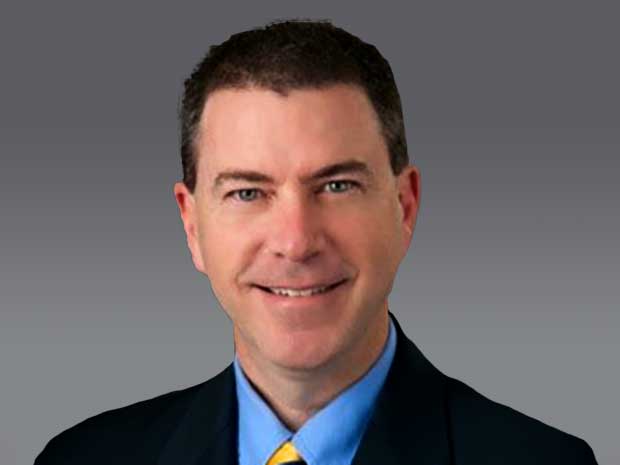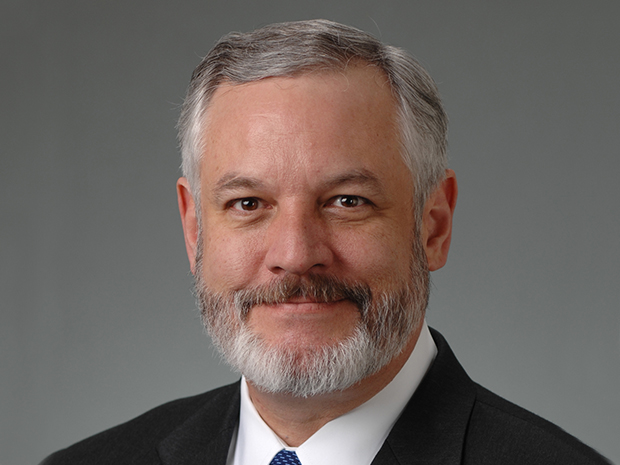Executives of nonprofits face pressures from every direction: sourcing funds, finding talent to run programs, defining their mission, keeping on top of technology. The challenge sums up to combining people, process and technology to achieve and sustain success. RSM consultants recently spoke on a number of ideas that are helping nonprofits take fresh approaches to problems and enhance their operations. Listen to Five ideas to drive success in your organization to learn more about the concepts discussed here.
The five ideas are connected by the notion of filling in gaps in areas such as:
- People: their roles, responsibilities and skill sets
- Processes: the workarounds, shortfalls in performance, redundancy, frustrations of the process
- Technology: how nonprofits’ professionals use the technology they have, and how that performance can be improved
- The big picture: seeing how strategy, mission and vision issues connect to and through the people, process and technology areas, to help nonprofits achieve their mission of having an impact on society
Solutions to such gaps need to be integrated to really drive nonprofits’ mission and vision. Here, we discuss the five ideas, along with the common gaps and case studies that show you how to close the gaps and achieve the outcomes you want.
Spend management
Spend management touches on where nonprofits spend their capital, and the controls and procedures that are meant to guide that spending. Gaps in spend management can be simple to identify because they involve dollars and can be quantified. Gaps include:
- Uncertainty about where expense dollars really go
- Regular cash flow problems
- Budget cuts that don’t seem to solve the issues
- Inadequate controls and policies around spending
- Rogue spending outside of established policies and procedures
Given the numbers, spend management requires a data driven process of analyzing your organization's spending habits to find potentially new ways to reduce cost and produce hard dollar savings. This begins with total expenses across the organization, which are then broken down into categories that can be analyzed even further.
In one case, a faith-based organization’s staffers often went off contract to buy printing supplies from multiple vendors. Delivery costs often ate up the savings from the deals. By reviewing a sample of the invoices and costs such as shipping, they found that the “deal of the day” mentality was saving on product costs but shipping costs were eroding the savings because they were higher than regular, scheduled shipping. By lessening the potential volume from a core group of vendors, the organization was missing an opportunity to save; indeed, they had not even asked vendors whether greater volume would increase shipping discounts. Negotiations with the vendor led to consolidation, fewer vendors providing more volume per vendor. As a result, the organization saved 8 percent, about $50,000.
Workforce planning
While spend analysis lends itself to numbers, the idea of workforce planning is more qualitative, the people side of the equation. Workforce planning touches on roles, responsibilities, skill sets, spans of control and organizational structure. Nonprofits are assessing their current talent supply and comparing that against their future demands. This approach tackles gaps that arise when:
- Staff members are passionate about your mission, but lack the right skill sets
- Individuals with key knowledge have no back-up person
- Individuals’ work activities are not defined and documented
- Retirements from an aging workforce are close ahead, taking years of valuable knowledge and experience with them
- Individuals are unsure or unaware of possible career paths
A case study shows how these issues play out. An organization’s grants management department had a manager and a staff person. The manager had a medical situation that left the entire workload on the staffer, who lacked the knowledge and experience to run the department. To stabilize the situation, the person was able to outline and document daily procedures and tasks. Back-up staffers were identified to step in if this person was not available. Lessons learned included documenting job functions and listing software and tools critical to those functions. The backup plan developed was critical to mitigate the risk of reoccurrence.
The same thinking applies to planning for retirement, which will swamp all organizations as aging baby boomers leave the job market. You can identify who's eligible for retirement now through the next 24 months to choose a possible timeline. Then, think about whether or not you would backfill those positions. For example: Is the position required for your organization? Could the duties be spread across two, three or more people? The salary resources could then be shifted to another project or objective that previously lacked the support. Think creatively and you may address multiple gaps (workforce, resources, programming) at the same time.
Systems optimization
No matter how talented, your workforce can be severely hampered if they work with slow, outdated IT systems. Your professionals need technology to do most everything, from financial reports to membership development. As the next big idea, systems optimization is the process of modifying a system to reduce costs, improve efficiencies and reduce errors or risks. Gaps that signal systems problems include:
- Manual processes
- Overstaffing with reliance on personnel doing work instead of systems
- Inability to complete tasks or goals
- Can’t get data or reports, or can’t get them in a timely manner
- Workarounds (Excel spreadsheets, multiple data entries)
Systems optimization often comes down to problems with software and how a nonprofit uses it. Problems often start when a program is not installed and configured properly. At other times, programs work well enough but they don’t work together. These problems result in the gaps outlined above.
The effort to optimize systems can benefit nonprofits in several ways. Optimization reduces costs and can improve efficiencies (as in producing the analyses required for spend management), as well as reduce errors or risks. When systems perform to their full potential, your nonprofit can maximize the ROI of its investment in systems. And as tasks become more automated, your workforce gains the freedom to focus on more value-added, mission focused work - a shift that ties in to employee satisfaction and workforce planning.
As an example, one nonprofit had an underperforming financial package that was not delivering satisfactory value for three consecutive years. The organization had only moved over the data from their previous system and did not think about their processes and how the new system would work. They did this in an effort to try to save money on the actual implementation cost. That was a short-sighted move, since the new system did not utilize the same process flows as their previous system. As a result, the nonprofit had to devise new manual processes to resolve the gaps.
They then took a step back to holistically review the situation. They documented their processes, developed process maps and worked with the software vendor to better understand the capabilities of their application, to see where they needed to either improve upon a process in place or make a change to the software to improve its efficiencies. As a result, the organization increased work flow throughout the accounting process, which reduced the month-end closing process and enabled faster report delivery. They also streamlined their purchase ordering and budgeting processes throughout the organization by implementing other available modules that were within the software and this decreased the overall time to accomplish these tasks.
The bottom line: By mapping processes and analyzing the software, the organization improved efficiencies, which, in turn, reduced the time in their processes. This saved costs, allowing the organization to see a better ROI on the original application investment.
Board effectiveness
Next, we turn to big-picture governance issues, the role of the board of directors. A well-functioning board has the proper structure, policies and procedures in place to help it oversee the nonprofit effectively and meet its governance oversight responsibility. However, boards can fall short of this definition. Symptoms of gaps include:
- Difficulty in finding and engaging board members, and tapping into their experience and passion
- Uncertainty about the board’s value and mission
- Overly focused on management rather than governance issues
Fixing such gaps starts when nonprofits engage board members and enlist them to help drive your organization and its mission. What are the benefits? Structure and purpose for the board enhances its effectiveness and also flows throughout the organization. It can help focus board members on what is needed most by the organization, instead of random strategies pursued by individual board members. The board can then better accomplish its governance responsibilities and maintain the trust that is built with stakeholders, donors and the community. And lastly, an effective board can help challenge management to strive toward greater goals and encourage the organization to perform and also to think strategically.
How do these concepts play out? Consider a nonprofit that relied on its board to drive operations. A new executive director came in and joined with the board to seek a fresh look at the board’s operations, policies and procedures. A review showed those areas needed a total overhaul, so they developed new approaches there. They also clarified key board responsibilities, which is now driving effectiveness and impact. Finally, the organization restructured leadership positions and implemented rotation procedures, leading to more consistent thought processes and actions by board members during their tenure.
Strategic planning
Strategic planning asks the big questions that tie together the other more tactical ideas mentioned above: Where is our nonprofit today? Where do we want to go? What's the problem we want to solve in the world and how are we going to get there? How do we break that down into manageable steps? Who's responsible? How do we drive accountability and give people specific goals and actions?
A lack of strategic planning causes gaps like:
- Uncertainty about long-term goals and how they tie to the mission
- Lack of clarity within the organization about strategic direction
- Disconnect between the strategic plan and daily operations
- Regularly missing targeted outcome measures
- Questioning where funding may be coming from or unsure how to spend money effectively
- Inability to prioritize, with too many projects competing for too few resources
These issues played out at a nonprofit historic village on its third generation of family leadership. In response to financial sustainability challenges, the organization undertook a strategic planning process that involved peer benchmarking, market analysis, customer segmentation and stakeholder surveys. Leadership took steps to close the financial gap by responding to calls for better communications and more thorough, transparent financial information for departments. An innovation committee is now looking at how the village can stay relevant, with plans for an expansion. With the financial gap closed, the organization is excelling at its mission and enhancing what it brings to the community.
For this nonprofit and others, strategic planning comes down to being clear about the organizational mission, and how each person in the entity works to support the mission. Know your workforce needs, now and in the future. Understand your customers and what they want. And finally, ask yourself, “What does success mean for my organization?” Three years from now, what would make you say, "This has been a really good three years for us?” And how would you measure the performance behind that satisfaction? Answer those questions, and you’ll enjoy the benefits of high-impact strategic planning.
With focus and planning, these ideas don’t have to consume all your resources to get done. You may not be able to tackle all five at once, but if you take a look at your organization, it’s likely that at least one or two of these could make a valuable and immediate impact, leading to higher operational performance and stronger mission achievement.



